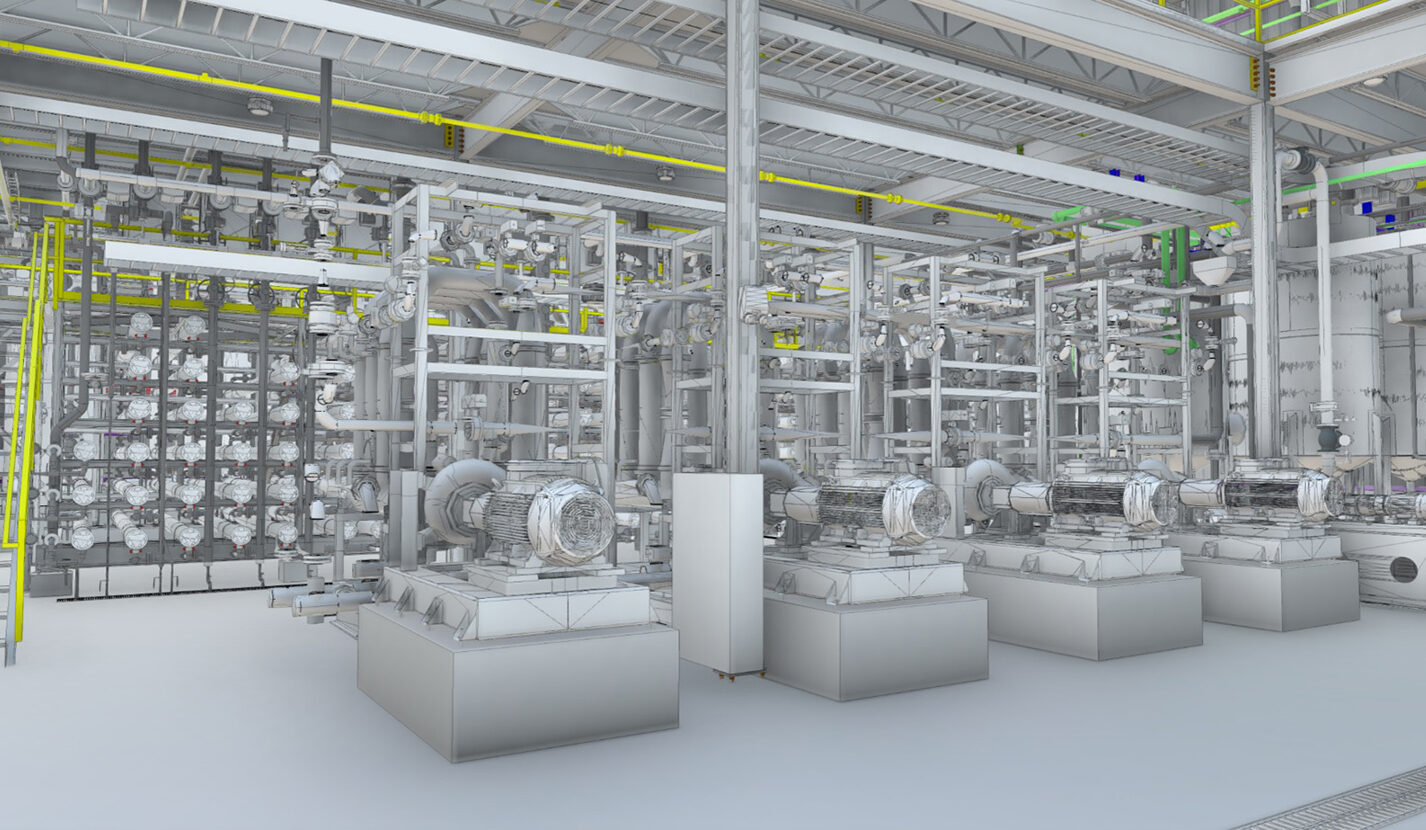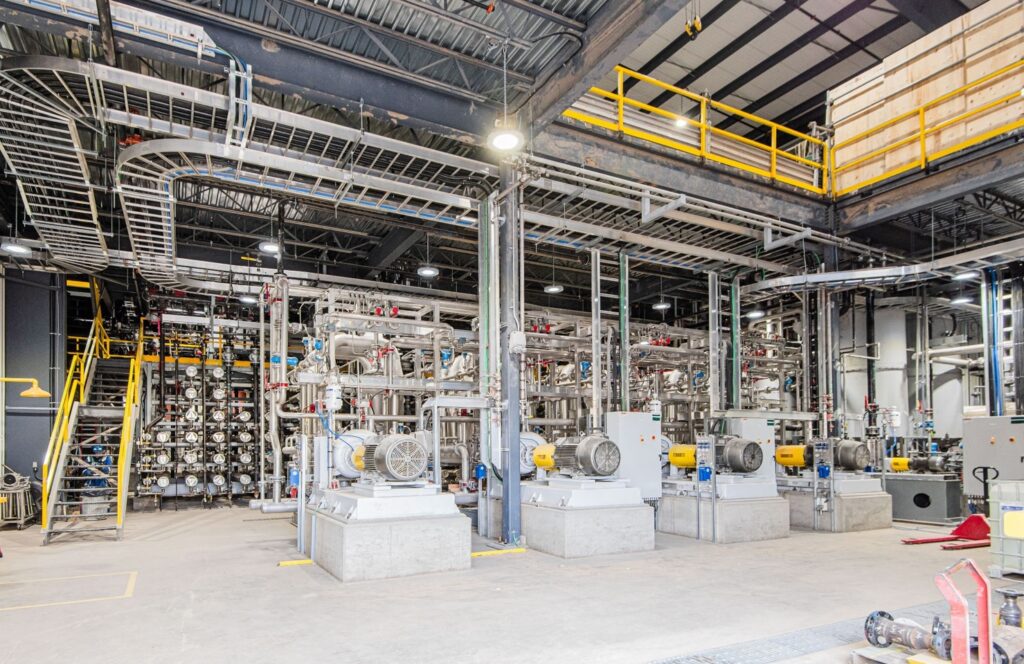
In the pulp and paper sector, a single step in the Kraft pulping process that converts wood into wood pulp is responsible for nearly 1% of global greenhouse gas emissions. Via Separations, a venture-backed climate tech company that is an indirect investee of the Autodesk Foundation portfolio through Prime Coalition, is using its technology to transform industrial separations through an innovative membrane filtration solution – with the goal of eliminating 80-90% of the energy currently used in thermal separations while creating value for industrial customers.
Via Separations uses Autodesk AEC solutions like AutoCAD and Revit to develop pumps, pipes, valves, and control systems that augment or replace fossil-fuel-powered thermal separation process units with energy-efficient, electrified filtration systems. They recently completed construction and commissioning of a 10,000 square-foot facility at a pulp mill, aimed at proving their decarbonization technology at scale to the manufacturing sector. Their work is a prime example of how technology can be leveraged to create economic, sustainable solutions for pressing environmental challenges, highlighting the power of design in driving sustainable innovation.

Separation Process
Typically, pulp and paper are created from fibers which are extracted from a variety of sources, often from forestry products, and converted to pulp. During this extraction process, pulp must be separated from other byproducts like lignin, chemicals, and water, which facilities recover for re-use in the process. This is where the most greenhouse gases end up being produced.
Via Separations is helping to transition away from expensive, energy-intensive thermal separations to more efficient mechanical separations, reducing the load on evaporators used during the process. Their technology has several benefits, namely energy and chemical savings, operational flexibility, and debottlenecking production.
Via Separations’ Black Liquor Concentration System uses a process similar to reverse osmosis, which directly removes hot, clean water from weak black liquor. Their filtration system uses proprietary membranes, which efficiently concentrate valuable liquor solids at high-temperature, corrosive conditions outside the typical operating window of other separation technology.

AutoCAD and the Plant 3D Toolset
Via Separations utilizes AutoCAD, in addition to other Autodesk solutions, for its robust and flexible features – allowing them to design and modify their filtration systems with precision and ease. By using AutoCAD, Via Separations can visualize their designs, simulate real-world performance, and identify potential issues before the manufacturing stage. This not only enhances the quality of their filtration system, but also saves time and reduces costs.
Specifically, they leverage the Plant 3D toolset, an extension of AutoCAD which provides specialized tools for creating, managing, and sharing plant design projects. With the help of the Plant 3D toolset, Via Separations can create intelligent piping and instrumentation diagrams (P&IDs) and then integrate them into their 3D plant design models.
“I’m kicking myself for not using Plant 3D earlier.”
Steve Zaloudek, Principal Engineer, Via Separations
This comprehensive approach allows Via Separations to streamline their design process, maintain consistency in their designs, and improve collaboration across their teams. The ability to visualize their designs in 3D also helps Via Separations optimize their designs, ensuring maximum efficiency and reliability of their filtration systems.
Learn More
Meet other leading innovators and entrepreneurs collaborating with the Autodesk Foundation to support the design and creation of innovative solutions to the world’s most pressing social and environmental challenges.


